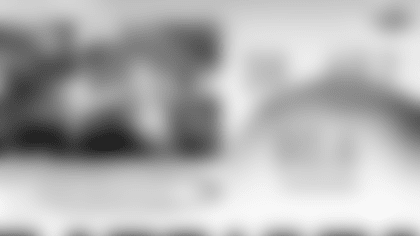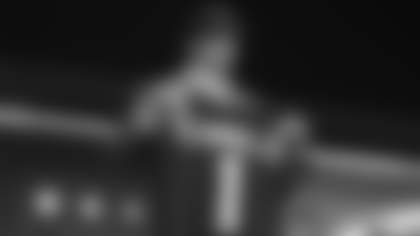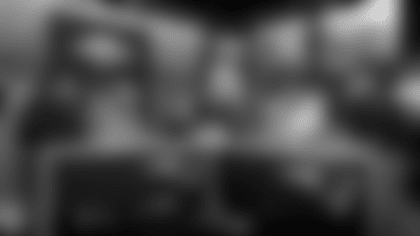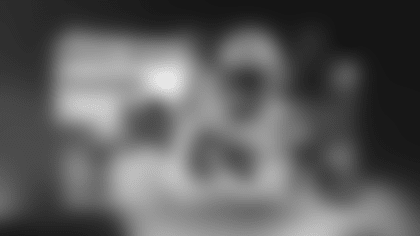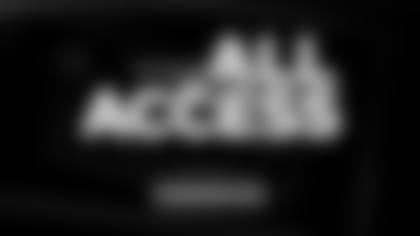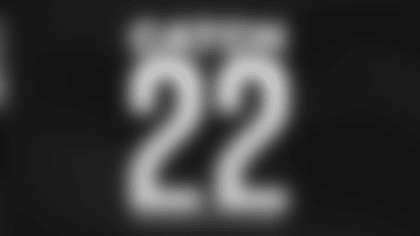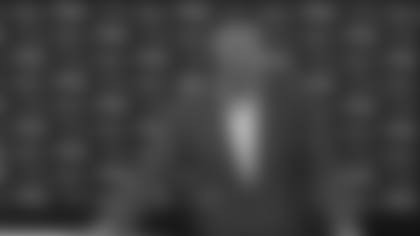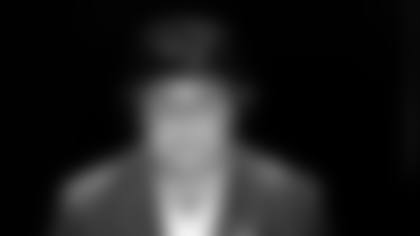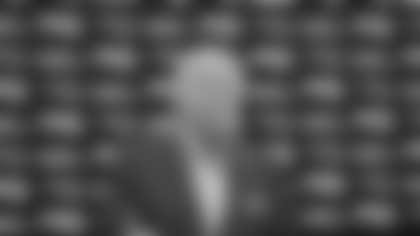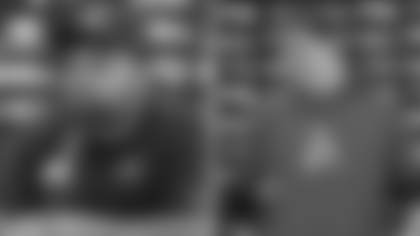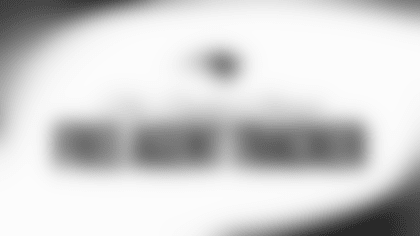PATRIOTS HEAD COACH JEROD MAYO
PRESS CONFERENCE
September 27, 2024
JM: It's Friday. Good morning. I appreciate you guys here. Obviously, we'll go out here today and have a good practice, kind of put a ribbon on it, then take this flight out to California. So, we're excited to get out there and really play some competitive ball. I think all week the guys have had great energy, did a good job changing the page, and we feel good where the team is.
Q: Obviously, you talked a lot about what you saw and didn't see last Thursday. What have you seen this week? You kind of mentioned energy, but what do you need to see from your team to come out of there with a victory?
JM: Well, the thing about last week – and I'm not making an excuse, I'm just going to be very transparent. On those short weeks, you can't have the padded practices and the competitive type of drills. It's more just walkthroughs. This is a different week. This was more like a normal week where we went out there Wednesday in pads, had a good practice, had a good practice yesterday as well. Today, like I said, you want to kind of wrap it up. With that being said, we still have time to continue to prepare for San Fran, and we'll just see how it goes.
Q: Demontrey Jacobs, you're just getting to know him, basically, after claiming him. What does he have going for him? You might need to turn to him depending on how things are.
JM: That's right. What I will say about Jacobs, the first thing is he's a big man. That's the first step. But he does a good job. He's very coachable, I would say. He does a good job throwing his hands. Look, are there some things to work on? 100%. But his mentality and attitude has been great. He's been getting better every single day.
Q: How is Sidy [Sow] responded this week since returning to the practice field?
JM: Sidy's done great. I talked to Sidy last week. It was close. It was close last week, and hopefully, we look forward to seeing him play here on Sunday.
Q: What does Anfernee [Jennings] bring to your defense, and what do you lose when he's not out there?
JM: First, I would say just his mentality and attitude. In the locker room and stuff, he's pretty quiet. But when he's on the field, he's an intense player, and I love that about him. He's a very good run defender out there on the edge. He does a good job with that and also has a level pass rush. He is a very smart player. I don't think we talk about that enough. Anfernee has played mainly as an outside back or defensive end, but you could easily – from a mental standpoint – put him off the ball because he understands the defense as a whole.
Q: How important might he be against a team that traditionally has run a lot of these wide-zone plays where they're trying to attack the edges?
JM: If he can't go, it's the next man up mentality. But you would want a guy that you know the edge is always going to be set. That's been a point of emphasis for us this week, is setting the edge. Not only in the run game, but also in the pass game as far as keeping the quarterback in the pocket. Someone else has to do it if he can't go, but hopefully he's there.
Q: How much would you say a game, especially like you just said on defense, is you need to be mentally locked in, your team needs to be mentally locked in to do what they need to do?
JM: Yeah, it's tough. This offense is tough. They have a few wrinkles, but once again, the way that – we're talking defense, right? The way that they build formations through motions and things like that, everyone has to be on the same page. A two-man surface can turn into a three-man surface very quickly, whether we're talking about pre-snap or post-snap. My thing is, we're going to match troops with troops. That's what it is. If they have more people over here, whether it's pre-snap or post-snap, then someone has to move. So, either you move the defensive line or the off the ball players have to adjust.
Q: What was the process like for you as a player when you come over to the bench after some mental mistakes as a defense when you were seeing things from guys? What was your approach to that as a player, but also keeping in mind what the coaches are doing, too?
JM: As a player, I'm not that old, so we still had tablets and pictures when I was a player, but we would just look at the pictures just to make sure it was the same. We always talk about being honest. We talked about this in the spring and in the summer. I've been a part of teams where everyone's like, 'I got double teamed on this,' and then the next guy, 'I got double teamed.' Everyone can't get double teamed. That's the good thing about the tablets and the pictures. I would walk over to show them the picture and then make sure we're on the same page with that player who made a mistake, or if I made a mistake, how we're going to look at it going forward. But that's what the league is. The league is about making adjustments. Way back in the day, it was more about the halftime adjustments. You hear everyone talk about, 'Oh, halftime,' but now you have to do it within the drive sometimes. The successful plays will repeat sometimes within the same drive. Talk about not being repeat error players.
Q: To stick with that, Jerod, I'm kind of curious about the tablets. I wanted to ask you a little bit about that today. Is that something that you want guys coming off and running right to? Is it more valuable for certain positions than others? What are just your high-level thoughts on the use of tablets?
JM: I love the tablets. I love the pictures. As a drive, whether it's offensive, defensively or special teams, the coaches should get together first. So, the coaches talk about the plays. Here on play six, what was the call? What happened here on play eight? The players also have a set of tablets on the sidelines, so I'm good with those guys looking at it before the coaches get over there. Then as soon as the coaches disperse, now we all look at the tablets and make those adjustments.
Q: There's one other thing I wanted to ask you with that. College this year, for the first time, is allowing full-on video, like All-22 that you can watch on the sidelines. I know the competition committee and the NFL have discussed that a couple times. Coaches, I think in the past, have said, 'No thanks,' to that, basically. There should be an advantage to some of that, but I'm just kind of curious –
JM: What would the advantage be if everyone has the same video?
Q: Their argument, I think, was basically there should be an advantage if you can recognize the play in real time and whatever.
JM: Hire good coaches. That's our job. It's very fair across the board. If everyone has video, I don't know what the problem would be. In the preseason this year, I think one game we did that, right? I think so. I'm not sure.
Q: You guys got the one open roster spot, if I'm not mistaken, after Ja'Whaun [Bentley] went on IR. Did you just sort of anticipate leaving it open for now?
JM: That's right. We still have time to have those discussions. We've had them all week, and we'll see. We have a number of guys who maybe they're in, maybe they're not in, so that kind of plays into it.
Q: Maybe next week with guys eligible to come off PUP, is that at all part of the conversation to leave a spot on the 53 open just in case?
JM: Between Eliot [Wolf] and myself, not the rest of the coaching staff.
Q: You're new, kind of, still at this, but have you been a pregame speech guy? Have you been a halftime speech guy? Have you kind of figured that out yet?
JM: I always like to address the team. Even the night before the game, I think they should hear my voice at the end of the day. Then, the same thing to start a game off: they should hear my voice. In the halftime, the same thing. Just so you guys understand – I like to give you guys little nuggets. You go in the locker room at halftime, the offensive coaches huddle up, the defensive coaches huddle up, the players go to their respective sides to hydrate and do all those things. They come together, the offensive coordinator speaks, the defensive coordinator speaks, and then I bring the whole team up, and we go back out there.
Q: In the middle of the game, are you a note taker?
JM: I am a note taker. I am, yeah. I have a little red notebook.
Q: Is that how you try to keep track of things that you might want to say to guys at halftime?
JM: Absolutely, and I would also say on those tablets, there's more than just the pictures on the tablets. You can see what's happening in the game from a statistical standpoint as well. It's easy to go into halftime, look at the tablet, 'Well, there's six out of ten here, or this is where we have to – they're averaging four or five yards a carry' because sometimes when you're in the moment in the game, you still need to take a step back and look at it from a higher point of view of the overall statistics and make the adjustments on that.
Q: Do you have a lot of voices going on? Are you talking during the game in your headsets, or are you just kind of one, two guys and that's it when it comes to what you guys have decided?
JM: Yes, so I follow the ball. When the offense is on the field, I switch channels. I do have a channel that's quiet because sometimes the channels get – I do have a channel that is quiet, and Evan [Rothstein] and myself, we're the only ones with access to that channel. I love that channel a lot of times.
Q: As a defensive-minded coach, what are the things you're trying to glean? You mentioned the notebooks, so what kind of things are you looking for when the offense is on the field?
JM: Even the defensive-minded or offensive-minded coaches kind of get a little wonky in my head. What I would say is, football is football. The game is about space, and I try to explain that to the coaches, I try to explain it to the players, even my son. Most of these team sports are about space. So, obviously, you can look at football: 3x1 is obviously, it's about space. But the same thing in hockey. Sometimes I'll watch hockey, and they'll overload a side, and they'll have a guy over here. Now, depending on who this guy is over here, you've got to make a choice defensively. Once again, it's about space. If this is, let's say, just a superstar player over here in hockey –
Q: [David] Pastrnak.
JM: Oh, there we go. Honestly, I was like, I have to name a [Boston] Bruin, but thank you for that. Either you double-team this guy, but now you're light over here. Same thing in basketball. So here you go, if you have Jayson Tatum over here versus someone who's not really a scorer and we overload a side, you've got to make a choice. We're going to double-team Jayson Tatum and be short over here on the overload side, or we'll just try to play it straight, and this guy now has a 1-on-1. All these games, same thing in soccer, it's about space. Overload a side, cross it, do whatever, but it's about numbers and space.
Q: Is that kind of what you talk about with [Joe] Mazzulla? Things like that?
JM: I do, yeah, and Joe's been great. I think I told you guys, Joe and I, before he became the head coach, we had a relationship. He would sit in the defensive meetings, and we would talk about philosophical things, philosophy. Team sports are team sports. It's great. Did you learn anything from that? I mean, like the space part, I'm saying the space part.
Q; How does it relate to how the Niners use motion? How do they create space by their use of motion offensively?
JM: For the Niners, which you really don't see a lot of 21-personnel teams, but they have an outstanding fullback. I would say it's more about bodies with this team more than space. So, everyone's in there tight, but now they start to move the bodies. Going back to the matching troops for troops, you have to match those troops. So, even on the post-snap stuff, that's why you build it over here, now everyone's moving. But if they pull a guy back here post-snap, they've added now an extra person. I mean, it's a lot. We should watch film. We'll watch film.
Q: It's not necessary to create space, it's to get a matchup?
JM: No, no, it's to get more bodies. This offense that we're playing, that's right. That's right.
Q: You mentioned fullback Kyle Juszczyk. What's the unique challenge that he presents as somebody who could be in the backfield, but also run?
JM: Yeah, he has an element that's tough to deal with, so whether you want to call him a fullback or a tight end, you have to identify where he is on the field. So, if he's in a tight end location, we've got to look at him as a tight end. He takes a couple steps backwards, now he's a fullback, and that's the difficult part about going against teams that actually do have a fullback.




